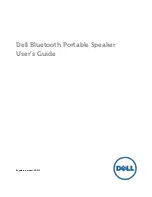
TP-6727 10/11
6
Safety Precautions and Instructions
Battery short circuits.
Explosion
can cause severe injury or death.
Short circuits can cause bodily injury
and/or
equipment
damage.
Disconnect
the
battery
before
generator
set
installation
or
maintenance.
Remove all jewelry
before servicing the equipment. Use
tools with insulated handles. Remove
the negative (--) lead first when
disconnecting the battery. Reconnect
the negative (--) lead last when
reconnecting
the
battery.
Never
connect the negative (--) battery cable
to the positive (+) connection terminal
of the starter solenoid. Do not test the
battery
condition
by
shorting the
terminals together.
Battery acid cleanup. Battery acid
can cause severe injury or death.
Battery acid is electrically conductive
and corrosive. Add 500 g (1 lb.) of
bicarbonate of soda (baking soda) to a
container with 4 L (1 gal.) of water and
mix the neutralizing solution. Pour the
neutralizing solution on the spilled
battery acid and continue to add the
neutralizing solution to the spilled
battery acid until all evidence of a
chemical
reaction
(foaming)
has
ceased. Flush the resulting liquid with
water and dry the area.
Engine Backfire/Flash
Fire
Fire.
Can cause severe injury or death.
Do not smoke or permit flames or
sparks near fuels or the fuel system.
WARNING
Servicing the fuel system. A flash
fire can cause severe injury or
death.
Do not smoke or permit flames
or sparks near the carburetor, fuel line,
fuel filter, fuel pump, or other potential
sources of spilled fuels or fuel vapors.
Catch fuels in an approved container
when
removing
the
fuel
line
or
carburetor.
Servicing the air cleaner. A sudden
backfire can cause severe injury or
death.
Do not operate the generator
set with the air cleaner removed.
Exhaust System
Carbon monoxide.
Can
cause
severe
nausea,
fainting, or death.
The
exhaust
system
must
be
leakproof and routinely inspected.
WARNING
Generator set operation.
Carbon
monoxide
can
cause
severe
nausea, fainting, or death.
Carbon
monoxide is an odorless, colorless,
tasteless, nonirritating gas that can
cause death if inhaled for even a short
time. Avoid breathing exhaust fumes
when working on or near the generator
set. Never operate the generator set
inside a building unless the exhaust
gas is piped safely outside.
Never
operate the generator
set where
exhaust gas could accumulate and
seep back inside a potentially occupied
building.
Carbon
monoxide
detectors.
Carbon monoxide can cause severe
nausea, fainting, or death.
Install
carbon monoxide detectors on each
level of the building.
Locate the
detectors to adequately warn the
building’s occupants of the presence of
carbon monoxide. Keep the detectors
operational at all times. Periodically
test and replace the carbon monoxide
detectors
according
to
the
manufacturer’s instructions.
Carbon
monoxide
symptoms.
Carbon monoxide can cause severe
nausea, fainting, or death.
Carbon
monoxide is a poisonous gas present
in exhaust gases. Carbon monoxide is
an
odorless,
colorless,
tasteless,
nonirritating gas that can cause death if
inhaled for even a short time. Carbon
monoxide
poisoning
symptoms
include but are not limited to the
following:
D
Light-headedness, dizziness
D
Physical fatigue, weakness in
joints and muscles
D
Sleepiness, mental fatigue,
inability to concentrate
or speak clearly, blurred vision
D
Stomachache, vomiting, nausea
If experiencing any of these symptoms
and carbon monoxide poisoning is
possible, seek fresh air immediately
and remain active. Do not sit, lie down,
or fall asleep.
Alert others to the
possibility
of
carbon
monoxide
poisoning. Seek medical attention if
the condition of affected persons does
not improve within minutes of breathing
fresh air.
Fuel System
Explosive fuel vapors.
Can cause severe injury or death.
Use extreme care when handling,
storing, and using fuels.
WARNING
The fuel system.
Explosive fuel
vapors can cause severe injury or
death.
Vaporized fuels are highly
explosive.
Use extreme care when
handling and storing fuels. Store fuels
in a well-ventilated area away from
spark-producing equipment and out of
the reach of children. Never add fuel to
the tank while the engine is running
because spilled fuel may ignite on
contact with hot parts or from sparks.
Do not smoke or permit flames or
sparks to occur near sources of spilled
fuel or fuel vapors. Keep the fuel lines
and connections tight and in good
condition. Do not replace flexible fuel
lines with rigid lines.
Use flexible
sections to avoid fuel line breakage
caused by vibration. Do not operate
the generator set in the presence of
fuel
leaks,
fuel
accumulation,
or
sparks.
Repair fuel systems before
resuming generator set operation.
Explosive fuel vapors can cause
severe
injury
or
death.
Take
additional precautions when using the
following fuels:
Propane (LP)
—Adequate ventilation
is mandatory.
Because propane is
heavier than air, install propane gas
detectors low in a room. Inspect the
detectors
per
the
manufacturer’s
instructions.
Natural Gas
—Adequate ventilation is
mandatory. Because natural gas rises,
install natural gas detectors high in a
room. Inspect the detectors per the
manufacturer’s instructions.
Summary of Contents for 15REYG
Page 1: ...Commercial Generator Sets Models 15REYG 30REYG TP 6727 10 11c Installation...
Page 16: ...TP 6727 10 11 16 Section 1 General Notes...
Page 44: ...TP 6727 10 11 44 Section 5 Controller Notes...
Page 48: ...TP 6727 10 11 48 Section 6 Generator Reconnection Notes...
Page 64: ...TP 6727 10 11 64 Notes...
Page 65: ...TP 6727 10 11 65 Notes...
Page 66: ...TP 6727 10 11 66 Notes...
Page 67: ......







































